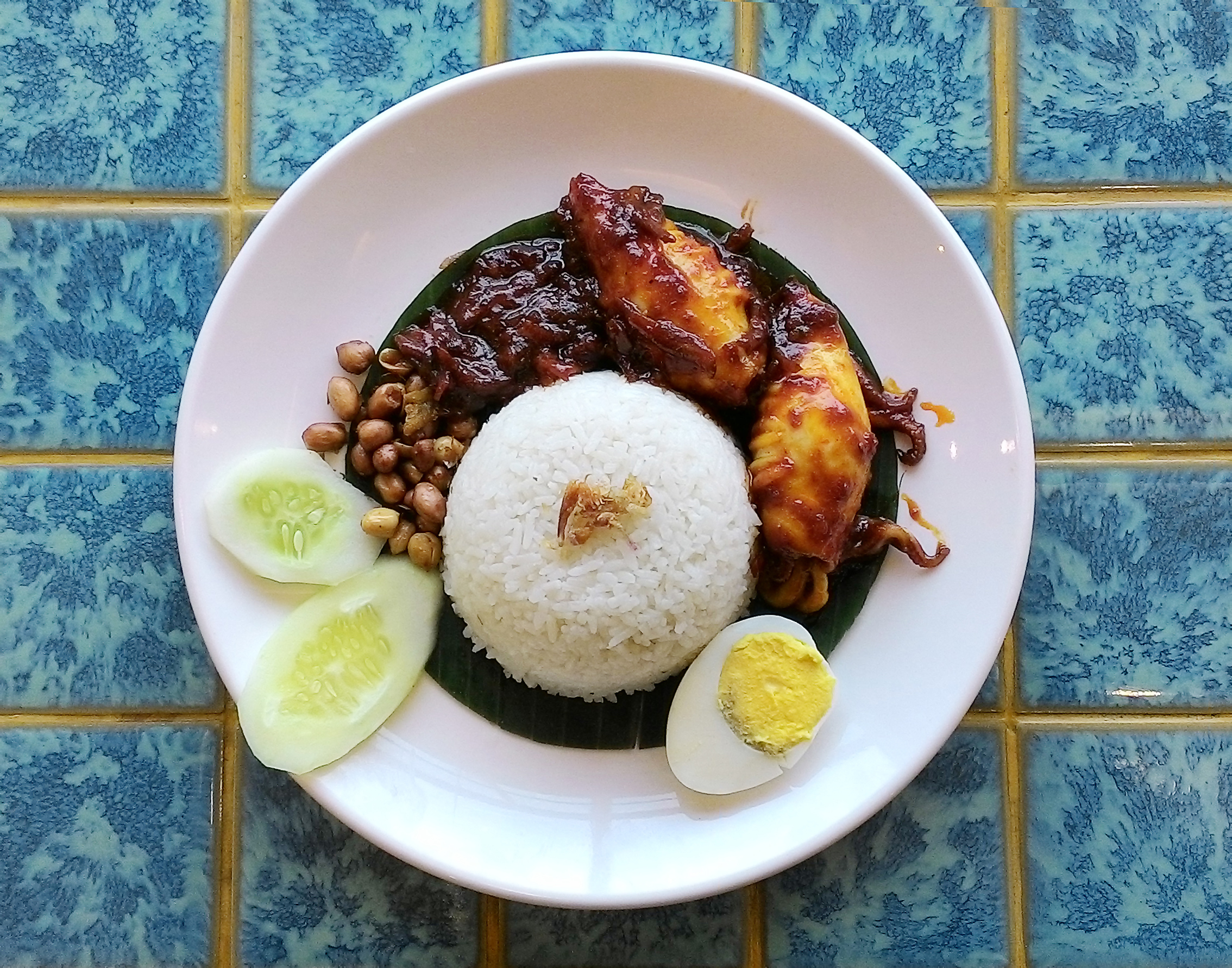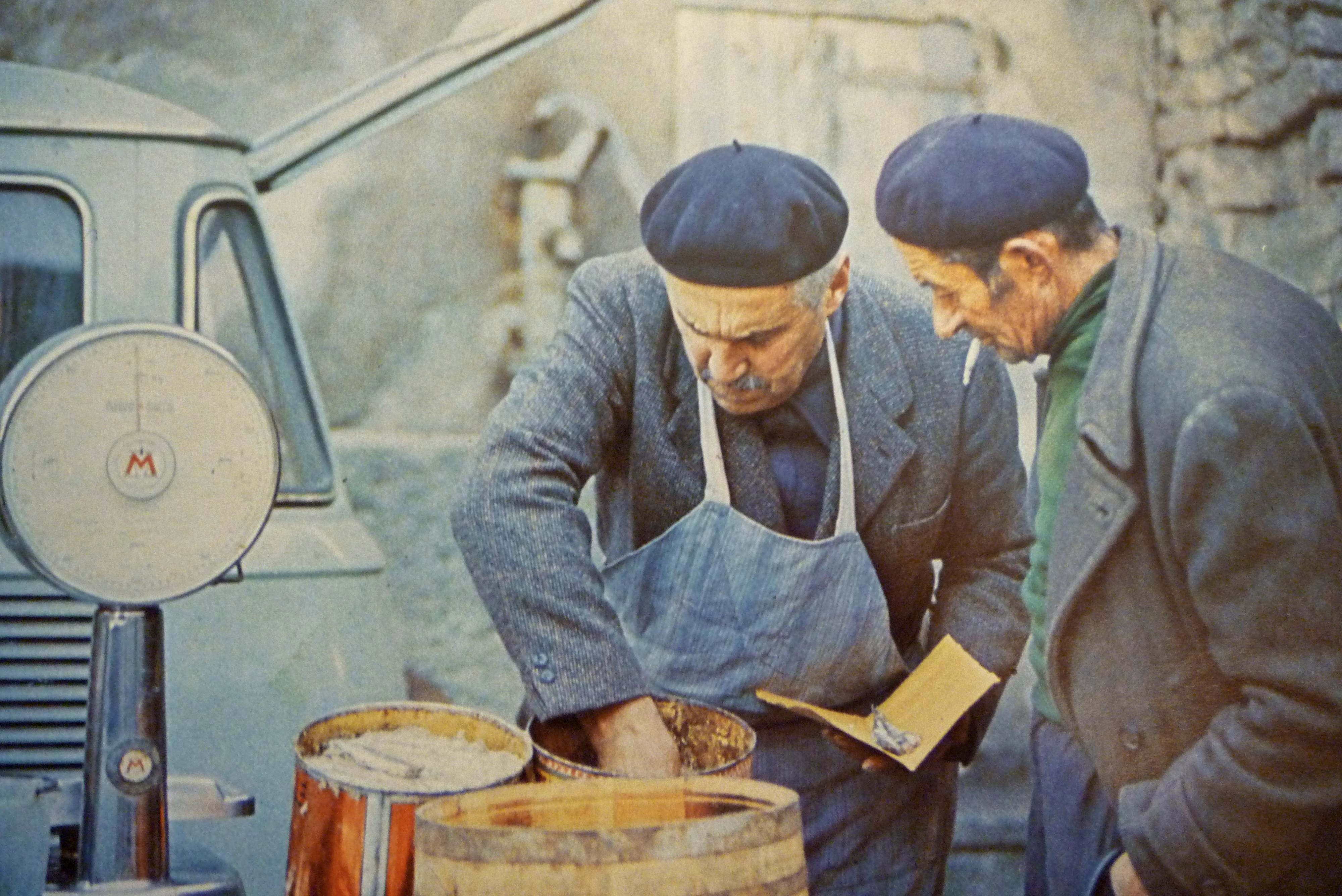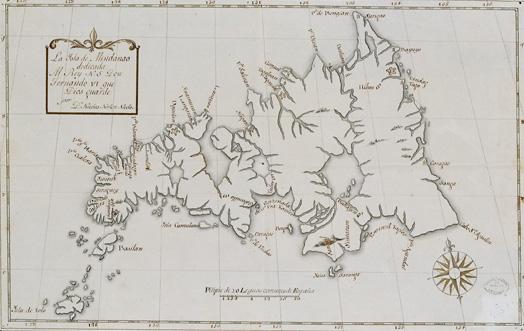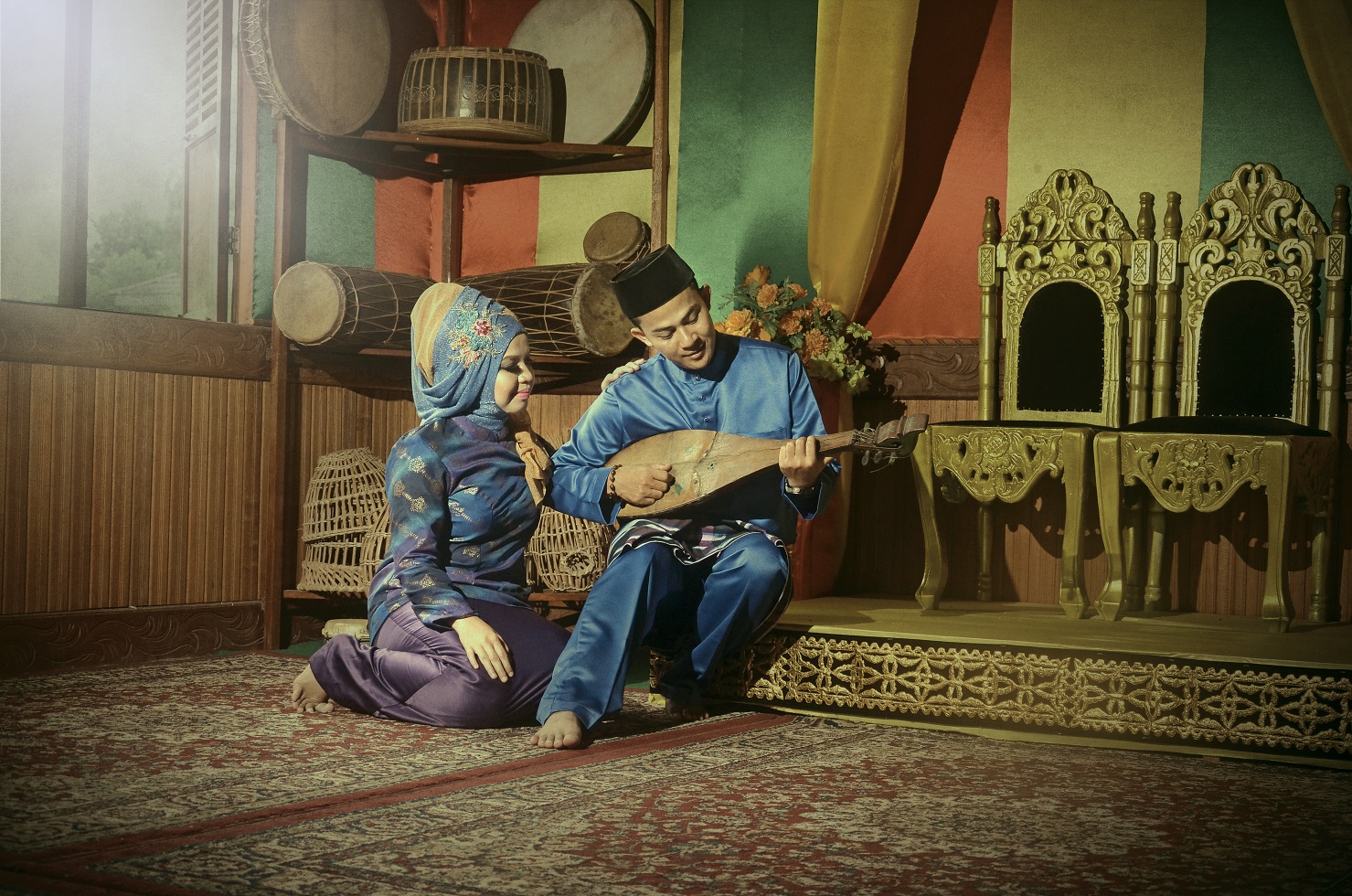|
Nasi Lemak
Nasi lemak ( Jawi: ; ) is a dish originating in Malay cuisine that consists of rice cooked in coconut milk and pandan leaf. It is commonly found in Malaysia, where it is considered the national dish. It is also a native dish in neighbouring areas with significant ethnic Malay populations, such as Singapore and Southern Thailand. In Indonesia, it can be found in parts of Sumatra, especially the Malay regions of Riau, Riau Islands, and Medan. It is considered an essential dish for a typical Malay-style breakfast. Nasi lemak can also be found in the Bangsamoro region of Mindanao, prepared by Filipino Moros, as well as in Australia's external territories of Christmas Island and the Cocos (Keeling) Islands. History and background Nasi lemak was mentioned as early as 1875 in a French–Malay dictionary compiled by Pierre-Etienne-Lazare Favre, a Roman Catholic missionary based on the Malay peninsula, and in a book titled ''The Circumstances of Malay Life'', written by Richard O ... [...More Info...] [...Related Items...] OR: [Wikipedia] [Google] [Baidu] |
Sambal
Sambal is an Indonesian chili sauce or paste, typically made from a mixture of chillis with secondary ingredients such as shrimp paste (terasi), garlic, ginger, shallot, scallion, palm sugar, and lime juice. ''Sambal'' is an Indonesian loanword of Javanese origin ( ). In addition to Indonesian cuisine, sambal is also an integral part of the cuisines of Singapore, Malaysia, Brunei, and Sri Lanka. It has also spread through overseas Indonesian populations to the Netherlands and Suriname. (Indonesian) Different sambal recipes are served as hot and spicy condiments for dishes, such as '' lalab'' (raw vegetables), '' ikan bakar'' (grilled fish), '' ikan goreng'' (fried fish), '' ayam goreng'' (fried chicken), '' ayam penyet'' (smashed chicken), '' iga penyet'' (ribs), and various '' soto'' soups. There are at least 212 variants of sambal in Indonesia, most of which originate in Java. History Sambal is often described as a hot and spicy Indonesian relish. However, its m ... [...More Info...] [...Related Items...] OR: [Wikipedia] [Google] [Baidu] |
Malay Cuisine
Malay cuisine (; Jawi script, Jawi: ) is the traditional food of the ethnic Malays of Southeast Asia, residing in modern-day Malaysia, Indonesia (parts of Sumatra and Kalimantan), Singapore, Brunei, Southern Thailand and the Philippines (mostly southern) as well as Cocos (Keeling) Islands, Cocos Islands, Christmas Island, Sri Lanka and South Africa. The main characteristic of traditional Malay cuisine is the generous use of spices. Coconut milk is also important in giving Malay dishes their rich, creamy character. The other foundation is ''belacan'' (prawn paste), which is used as a base for , a rich sauce or condiment made from , chili pepper, chilli peppers, onions and garlic. Malay cooking also makes plentiful use of lemongrass and galangal. Nearly every Malay meal is served with rice, which is also the staple food in many other Asian cultures. Although there are various types of dishes in a Malay meal, all are served at once, not in courses. A typical meal consists of a ... [...More Info...] [...Related Items...] OR: [Wikipedia] [Google] [Baidu] |
Anchovy (food)
Anchovies are small, common Saltwater fish, saltwater forage fish in the family Engraulidae that are used as human food and fish bait. There are 144 species in 17 genera found in the Atlantic, Indian Ocean, Indian, and Pacific Oceans. Anchovies are usually classified as oily fish. They are small, green fish with blue reflections due to a silver Anatomical terms of location#Elongated organisms, longitudinal stripe that runs from the base of the caudal fin. They range from to in adult length, and the body shape is variable, with more slender fish in northern populations. A traditional method of Fish processing, processing and Fish preservation, preserving anchovies is to gut and salting (food), salt them in brine, allow them to Curing (food preservation), cure, and then pack them in oil or salt. This results in the characteristic strong flavor associated with anchovies, and their flesh turns deep grey. Anchovies Pickling, pickled in vinegar, as with Spanish ''boquerones en vina ... [...More Info...] [...Related Items...] OR: [Wikipedia] [Google] [Baidu] |
Banana Leaves
The banana leaf is the leaf of the banana plant, which may produce up to 40 leaves in a growing cycle. The leaves have a wide range of applications because they are large, flexible, waterproof and decorative. They are used for cooking, wrapping, and food-serving in a wide range of cuisines in tropical and subtropical areas. They are used for decorative and symbolic purposes in numerous Hindu and Buddhist ceremonies. In traditional home building in tropical areas, roofs and fences are made with dry banana-leaf thatch. Bananas and palm leaves were historically the primary writing surfaces in many nations of South and Southeast Asia. Applications in cuisine Banana leaves are large, flexible, and waterproof.Frozen Banana Leaf , Temple of Thai Food Store They impart an aroma to food that is cooked ... [...More Info...] [...Related Items...] OR: [Wikipedia] [Google] [Baidu] |
Nasi Lemak 01a
Nasi may refer to: Food Dishes Nasi Goreng is an Indonesian and Malay word for ''cooked rice'', featured in many Southeast Asian dishes *Nasi goreng, a popular rice dish often simply called ''nasi'' *Other Southeast Asian ''nasi'' dishes: ** Nasi ambeng ** Nasi bakar ** Nasi bogana **Nasi campur **Nasi dagang **Nasi goreng jawa ** Nasi goreng pattaya ** Nasi gurih ** Nasi jamblang **Nasi kapau **Nasi kari **Nasi kebuli ** Nasi kerabu **Nasi kucing **Nasi kuning **Nasi lemak **Nasi lemuni ** Nasi lengko **Nasi liwet ** Nasi mandi ** Nasi minyak **Nasi padang ** Nasi paprik ** Nasi pecel ** Nasi tempong ** Nasi tim ** Nasi timbel ** Nasi tutug oncom **Nasi tumpang **Nasi tumpeng **Nasi uduk **Nasi ulam Restaurant * Pelita Nasi Kandar, a Malaysian restaurant chain Religion *Nasi (Hebrew title), meaning ''prince'' in Biblical Hebrew and ''president'' in Modern Hebrew *Nasi', an Islamic concept mentioned in the Qur'an People * Nasi Manu, a New Zealand professional rugby player *Nasi ( ... [...More Info...] [...Related Items...] OR: [Wikipedia] [Google] [Baidu] |
Coconut Cream
Coconut milk is a plant milk extracted from the grated pulp of mature coconuts. The opacity and rich taste of the milky-white liquid are due to its high oil content, most of which is saturated fat. Coconut milk is a traditional food ingredient used in Southeast Asia, Oceania, South Asia, and East Africa. It is also used for cooking in the Caribbean, Central America, northern parts of South America and West Africa, where coconuts were introduced during the colonial era. Coconut milk is differentiated into subtypes based on fat content. They can be generalized into coconut cream (or thick coconut milk) with the highest amount of fat; coconut milk (or thin coconut milk) with a maximum of around 20% fat; and coconut skim milk with negligible amounts of fat. This terminology is not always followed in commercial coconut milk sold in Western countries. Coconut milk can also be used to produce milk substitutes (differentiated as "coconut milk beverages"). These products are not the s ... [...More Info...] [...Related Items...] OR: [Wikipedia] [Google] [Baidu] |
Malay Language
Malay ( , ; , Jawi alphabet, Jawi: ) is an Austronesian languages, Austronesian language spoken primarily by Malays (ethnic group), Malays in several islands of Maritime Southeast Asia and the Malay Peninsula on the mainland Asia. The language is an official language of Brunei, Malaysia, and Singapore. Indonesian language, Indonesian, a standardized variety of Malay, is the official language of Indonesia and one of the working languages of East Timor. Malay is also spoken as a regional language of Malays (ethnic group), ethnic Malays in Indonesia and the Thai Malays, southern part of Thailand. Altogether, it is spoken by 60 million people across Maritime Southeast Asia. The language is pluricentric and a ISO 639 macrolanguage, macrolanguage, i.e., a group of Mutual intelligibility, mutually intelligible speech varieties, or dialect continuum, that have no traditional name in common, and which may be considered distinct languages by their speakers. Several varieties of it ar ... [...More Info...] [...Related Items...] OR: [Wikipedia] [Google] [Baidu] |
Richard Olaf Winstedt
Sir Richard Olaf Winstedt (2 August 1878 – 2 June 1966), or more commonly R. O. Winstedt, was an English Orientalist and colonial administrator with expertise in British Malaya. Early life and education Winstedt was born in Oxford and educated at Magdalen College School and New College, Oxford, from which he received an MA. His brother was Eric Otto Winstedt, a Latinist and gypsiologist. In 1902 he became a cadet in the Federated Malay States Civil Service, and was posted to Perak where he studied Malay language and culture. In 1913 he was appointed District Officer in Kuala Pilah, and in 1916 appointed to the Education Department. In 1920 he received his DLitt degree from Oxford. Career Winstedt served as the first President of Raffles College, Singapore, 1928–1931. During his presidency, he also served as acting Secretary to the High Commissioner, 1923, Director of Education for Straits Settlements and Federated Malay States (FMS), as a member of ... [...More Info...] [...Related Items...] OR: [Wikipedia] [Google] [Baidu] |
Moro People
The Moro people or Bangsamoro people are the 13 Muslim-majority ethnolinguistic Austronesian groups of Mindanao, Sulu, and Palawan, native to the region known as the Bangsamoro (lit. ''Moro nation'' or ''Moro country''). As Muslim-majority ethnic groups, they form the largest non-Christian population in the Philippines, and according the 2020 census conducted by the Philippine Statistics Authority, they comprise about 6.5% of the country's total population, or 7.1 million people. Most Moros are followers of Sunni Islam of the Shafiʽi school of fiqh. The Moros were once independent under a variety of local states, including the Sultanate of Sulu, the Sultanate of Maguindanao, and the Confederation of sultanates in Lanao; withstanding repeated Spanish invasions, the Moro states remained de facto independent up until the Moro Rebellion of the early 20th century. Upon Philippine independence in 1946, the Moros continued their struggle for self-determination against a predom ... [...More Info...] [...Related Items...] OR: [Wikipedia] [Google] [Baidu] |
Mindanao
Mindanao ( ) is the List of islands of the Philippines, second-largest island in the Philippines, after Luzon, and List of islands by population, seventh-most populous island in the world. Located in the southern region of the archipelago, the island is part of an island group of the same name that also includes its adjacent islands, notably the Sulu Archipelago. According to the 2020 census, Mindanao had a population of 26,252,442, while the entire island group had an estimated population of 27,021,036. Mindanao is divided into six administrative regions: the Zamboanga Peninsula, Northern Mindanao, the Caraga region, the Davao Region, Davao region, Soccsksargen, and the autonomous region of Bangsamoro. According to the 2020 census, Davao City is the most populous city on the island, with 1,776,949 people, followed by Zamboanga City (pop. 977,234), Cagayan de Oro (pop. 728,402), General Santos (pop. 697,315), Butuan (pop. 372,910), Iligan (pop. 363,115) and Cotabato City (pop. ... [...More Info...] [...Related Items...] OR: [Wikipedia] [Google] [Baidu] |
Bangsamoro
Bangsamoro, officially the Bangsamoro Autonomous Region in Muslim Mindanao (BARMM; ; ), is an autonomous region in the Philippines, located in the southwestern portion of the island of Mindanao. Replacing the Autonomous Region in Muslim Mindanao (ARMM), the BARMM was formed with the ratification of its basic law, the Bangsamoro Organic Law, following a two-part legally binding plebiscite in Western Mindanao held on January 21 and February 6, 2019. The ratification was confirmed a few days later on January 25 by the Commission on Elections (COMELEC). The establishment of Bangsamoro was the culmination of several years of peace talks between the Philippine government and several autonomist groups; in particular the Moro Islamic Liberation Front (MILF), which rejected the validity of the ARMM and called for the creation of a region with more powers devolved from the national government. A framework agreement known as the Comprehensive Agreement on the Bangsamoro was negotiat ... [...More Info...] [...Related Items...] OR: [Wikipedia] [Google] [Baidu] |
Malay Indonesian
Malay Indonesians (Malay language, Malay/Indonesian language, Indonesian: ''Orang Melayu Indonesia''; Jawi script, Jawi: ) are Malays (ethnic group), ethnic Malays living throughout Indonesia. They are one of the indigenous peoples of the country. Indonesian language, Indonesian, the national language of Indonesia, is a standardized form of Riau Malays, Riau Malay.Sneddon 2003, ''The Indonesian Language: Its History and Role in Modern Society'', p. 69–70 There were numerous kingdoms associated with the Indonesian Malays along with Ethnic groups in Indonesia, other ethnicities in what is now Indonesia, mainly on the islands of Borneo and Sumatra. These included Srivijaya, the Melayu Kingdom, Dharmasraya, the Sultanate of Deli, the Sultanate of Siak Sri Indrapura, the Riau-Lingga Sultanate, the Sultanate of Bulungan, Pontianak Sultanate, and the Sultanate of Sambas. The 2010 Indonesia census, 2010 census states that there are 8 million Malays in Indonesia; this number comes from th ... [...More Info...] [...Related Items...] OR: [Wikipedia] [Google] [Baidu] |








